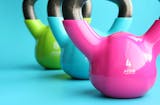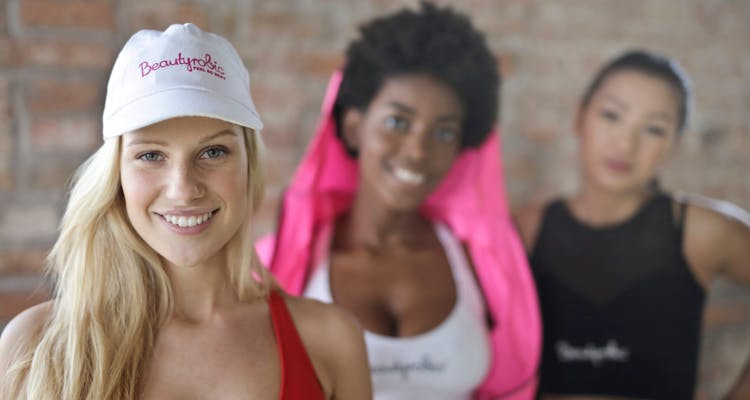Contents
This is NOT a lame “how to choose a sports bra” post.
Yes, I’ll cover how to pick a sports bra that fits you well. But you’re also going to see how to pick a sports bra that works for you – one that is comfortable and at the same time, prevents breast sagging over time.
Choosing the right sports bra is not an easy job but essential skill to learn for women of any size, shape or activity level.
Most women athletes are able to pick a sports bra based on support and comfort, but still many end up choosing the wrong size to wear. This can lead to breast pain and damage to soft tissues in the future.
Therefore, it is important that you find a bra with adequate support for leading an active lifestyle without risks or undue discomfort.
Step 1: Understand Your Activity Level
Step 2: Learn About Sports Bra Construction and Features
Step 3: Find The Bra Size That Fits You Well
Understand Your Activity Level
Sports Bras are usually designed with 3 levels of support namely low, medium and high support for use in low-, medium- and high-impact sports activity.
| Low Support Bra for low-impact sports | Medium Support Bra for medium-impact sports | High Support Bra for high-impact sports |
| Yoga | Road Cycling | Running and Aerobics |
| Strength Training | Moderate Hiking | Dance and Zumba |
| Walking | Skiing | Mountain Biking |
Learn About Sports Bra Styles & Features
Sports Bra Construction Styles
Sports Bras use the 3 types of sports bra construction styles to minimize breast movement during activity:
- Encapsulation Bra
- Compression Bra
- Hybrid Bra
Encapsulation Bras use cup style design to surround and support each breast separately. Most everyday bras are encapsulation bras with no compression and natural shape, thus, are recommended for fit for low-impact activities.
Compressions Bras are more constrictive and tight as they compress your breasts against your chest to restrict movement, thus, are suitable for medium-impact activities.
Hybrid Bras use the best of both the worlds above using both encapsulation via cup designs and compression by pushing your breasts towards your chest to restrict movements, in a comfortable and high support design, thus, making them best choice for high-impact activities.
Sports Bra Strap Types & Features
- Crisscross
- Tank Top
- Racer-back
Crisscross Sports Bras have straps in criss-cross fashion at the back. They provide good support and easily hide inside a top.
Tank Top Bras sport the conventional bra style with straight straps wrapping over your shoulders that can be adjusted to fine tune to your fit and a buckle to close the bra at the back.
Racerback Bras have shoulder straps that come between your shoulder blades and create a Y shape at the back. These are considered best for high-impact sports, although don’t have the adjustability feature to fine tune the bra to your fit and hence, should be bought with care to get the right size.
Overall, what you need to understand is that if you go for thin straps, you’ll get lesser support but your bra will get easily concealed inside your top. However, with a wider strap – you’ll get better support but they are not easily concealed.
Other Features
- Bands – Bands are the primary source of support in Sports Bras. If you’re able to get 2 fingers inside the band and your body, then its a sign of a good fit. Another point to remember is that wider bands provide more support than narrower bands.
- Shoulder straps – Shoulder Straps restrict the up-down movement of the bras. Wider straps offer more support with better weight distribution on your shoulder and they don’t dig into your shoulders during any strenuous activity.
- Adjustable straps – Adjustable straps fit better as the size can be finely tuned to your size and are often found in encapsulation bras.
- Back closure – This restricts the left-right movement of the bras using hooks and provide additional stability to the sports bra.
- Underwire – Supporting each breast individually, the underwire help minimize movement of your bra but should not poke or pinch you during any activity.
- Wicking Fabrics – They help keep the moisture away from skin. However, the higher support you go for in the sports bra, the lower moisture comfort because a sturdier fabric is required for more support.
Finding A Sports Bra That Fits You Well
Due to different proportions of different parts in different women, the sports bra fitting is not as accurate and therefore, requires additional fine tuning using adjustable straps and back closure multiple hooks to get it right. You need to try out different sizes to fit the one that really fits.
The important sizes to consider are:
- Rip Cage Measurement – Take measurement of your rib cage area, under your breasts with the tape being not too tight and round up to nearest inch.
- Finding a Matching Band Size – Find your corresponding band size on the basis of your rib cage measurement from the Table 1.0 below.
- Bust Size – Measure your bust size by keeping the tape along the biggest part of your breast.
- Cup Size – Now subtract your rib cage measurement from your bust size measurement to find your cup size and round it up to the nearest inch. See Table 2.0 below.
Table 1.0
| Rib Cage Measurement (in Inches) | Band Size |
|---|---|
| 25″ – 27″ | 30 |
| 27″ – 29″ | 32 |
| 29″ – 31″ | 34 |
| 31″ – 33″ | 36 |
| 33″ – 35″ | 38 |
| 35″ – 37″ | 40 |
| 37″ – 39″ | 42 |
| 39″ – 41″ | 44 |
Table 2.0
| Bust Size – Rib Cage Size ( In inches) | Your Cup Size |
| 3” | AA |
| 4” | A |
| 5” | B |
| 6” | C |
| 7” | D |
| 8” | DD |
| 9” | E |
| 10” | F |
Last Minute Tips for Picking Your Perfect Size and Fitting for Sports Bras
Once you’ve found your bra size, it is time to test the fit and see if the sports bra size and style you’ve chosen is really comfortable.
In all cases, don’t go for a size that is too tight and restricts your breathing and causes discomfort. It is important to point out here that a sports bra will feel slightly tighter than a regular bra.
Use the 2 finger space technique to see if the straps are comfortable and are not digging into your shoulders, while not loose enough as well to slip off easily.
After wearing the sports bar, you can check it by raising your hands up. If this causes the band to ride up, it may be too big. Now, just try adjusting the straps or back closure. If that doesn’t work, try a smaller band size.
Similarly, ensure that your breasts are centered and full covered in the cups and the bra fits you without wrinkles. If the breast feels pressed outside of the bra, then may be the chosen size is too tight for you or not of your breast type.
Finally, test the bra by jumping or running in place. If the bra doesn’t feel secure and moves around, then look for a better fit.
I hope you’ve found this post useful. If you’re looking for a perfect sports bra for yourself, you can look at Knix sports bra for buying a comfortable bra.







Comments are off this post!